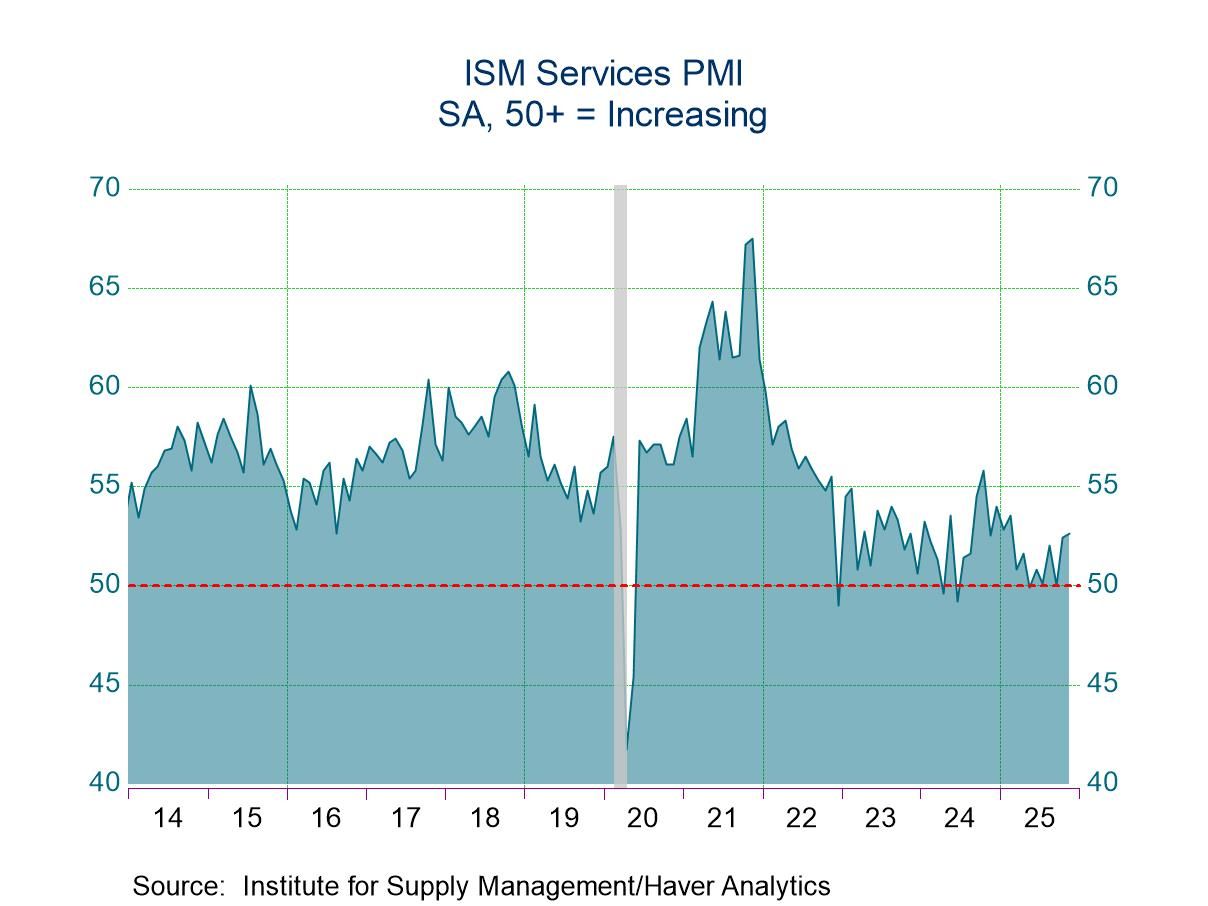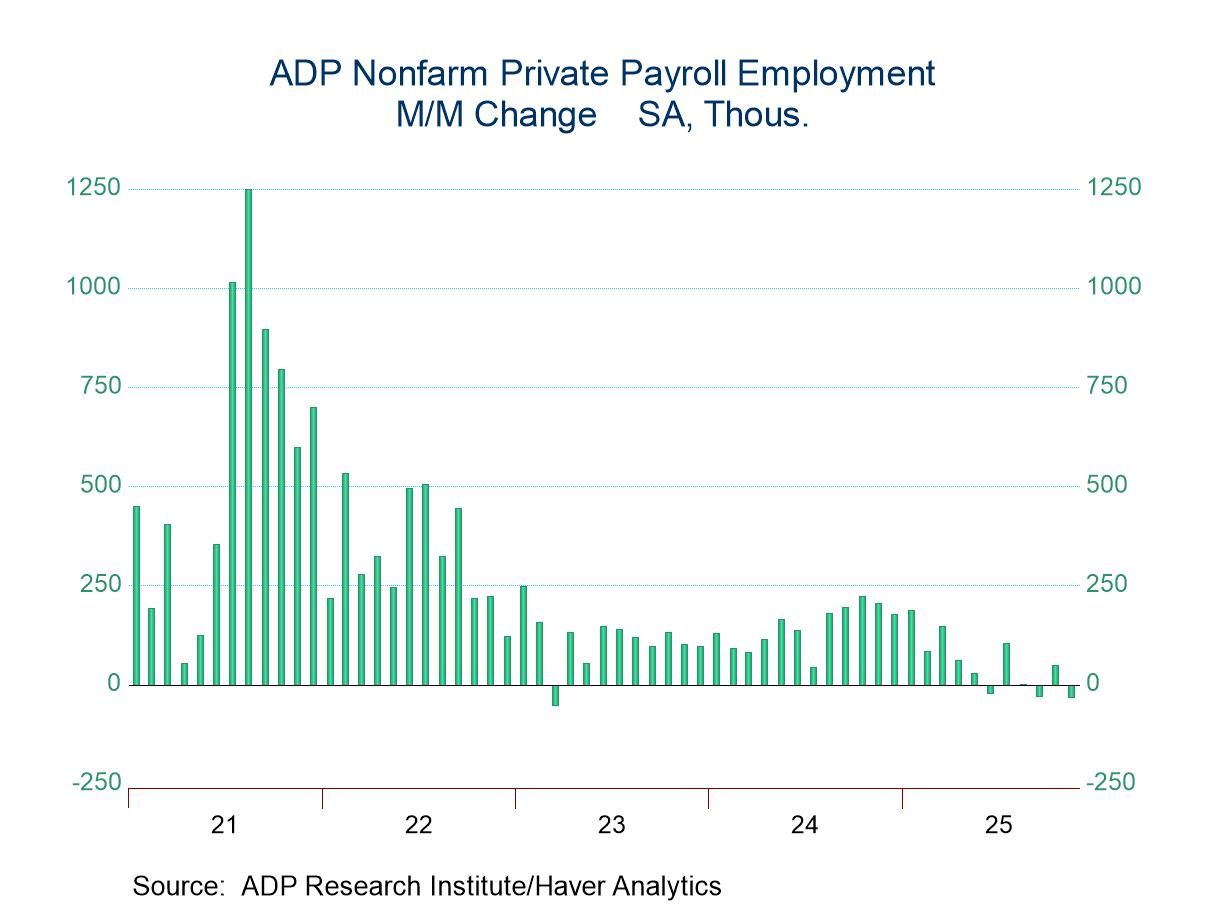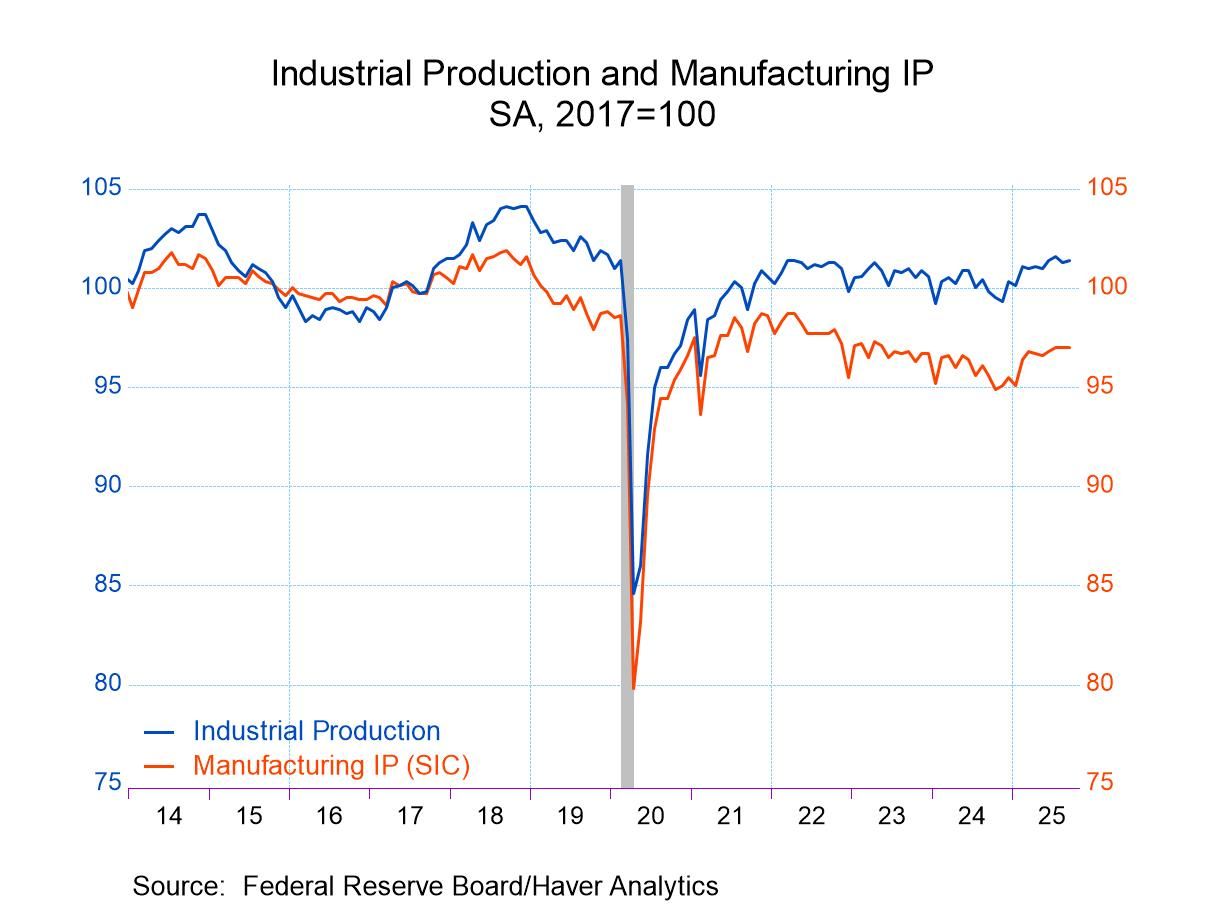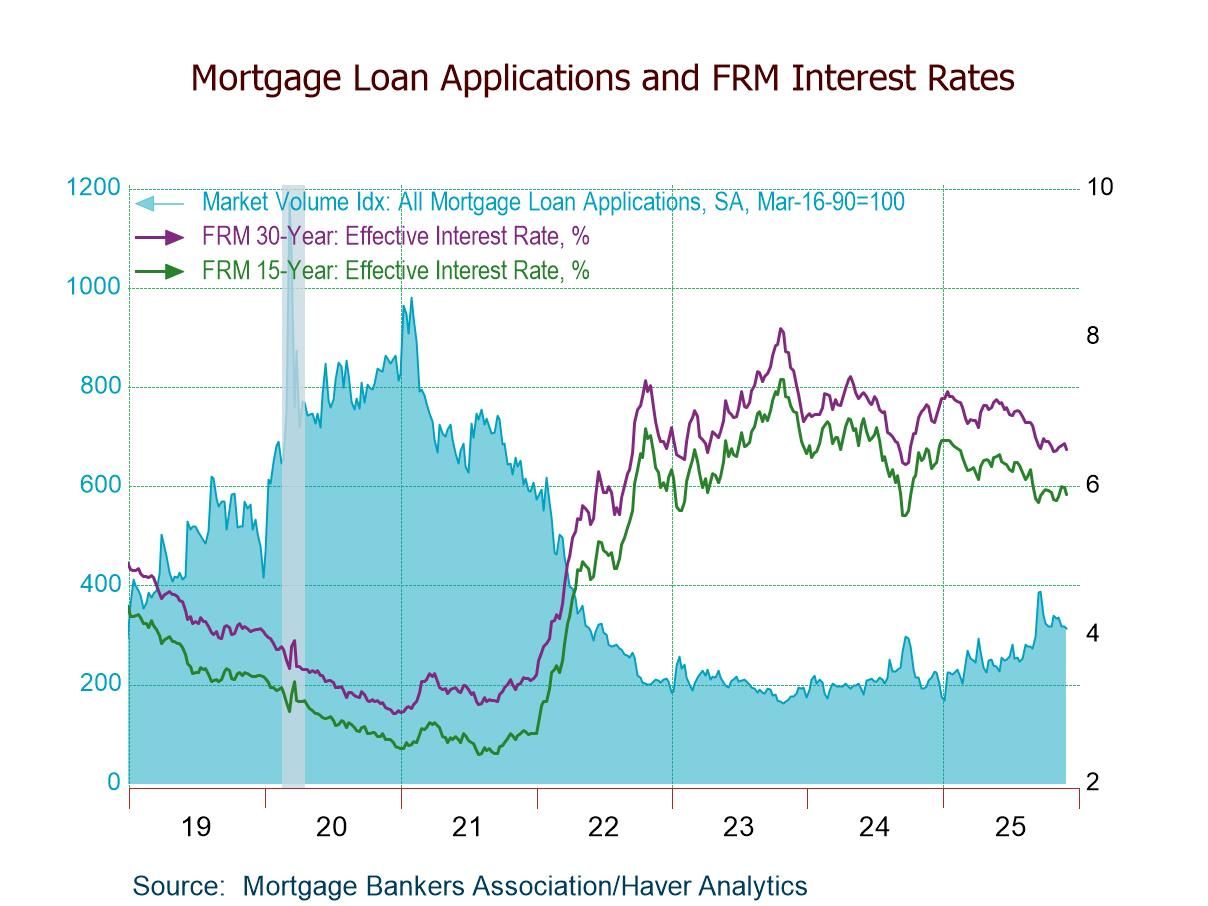U.S. Philly Fed Manufacturing Index Dipped Below Zero in August
by:Sandy Batten
|in:Economy in Brief
Summary
- The headline index fell more than 16 points to -0.3, led by outsized declines in both new orders and shipments.
- The ISM-adjusted composite fell below the critical 50 level for the first time in four months, also pointing to a decline in activity.
- Delivery times shortened further while both prices paid and prices received indexes posted gains.
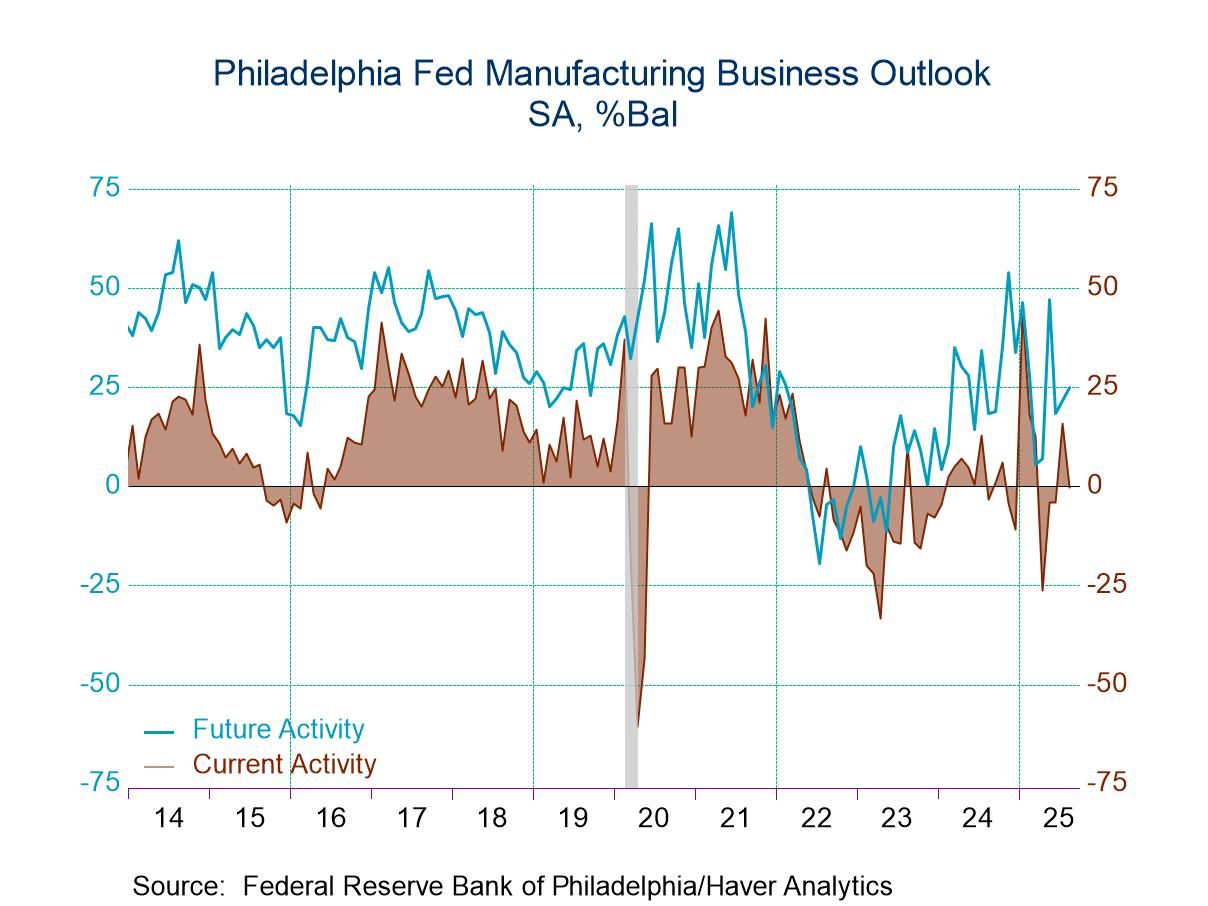
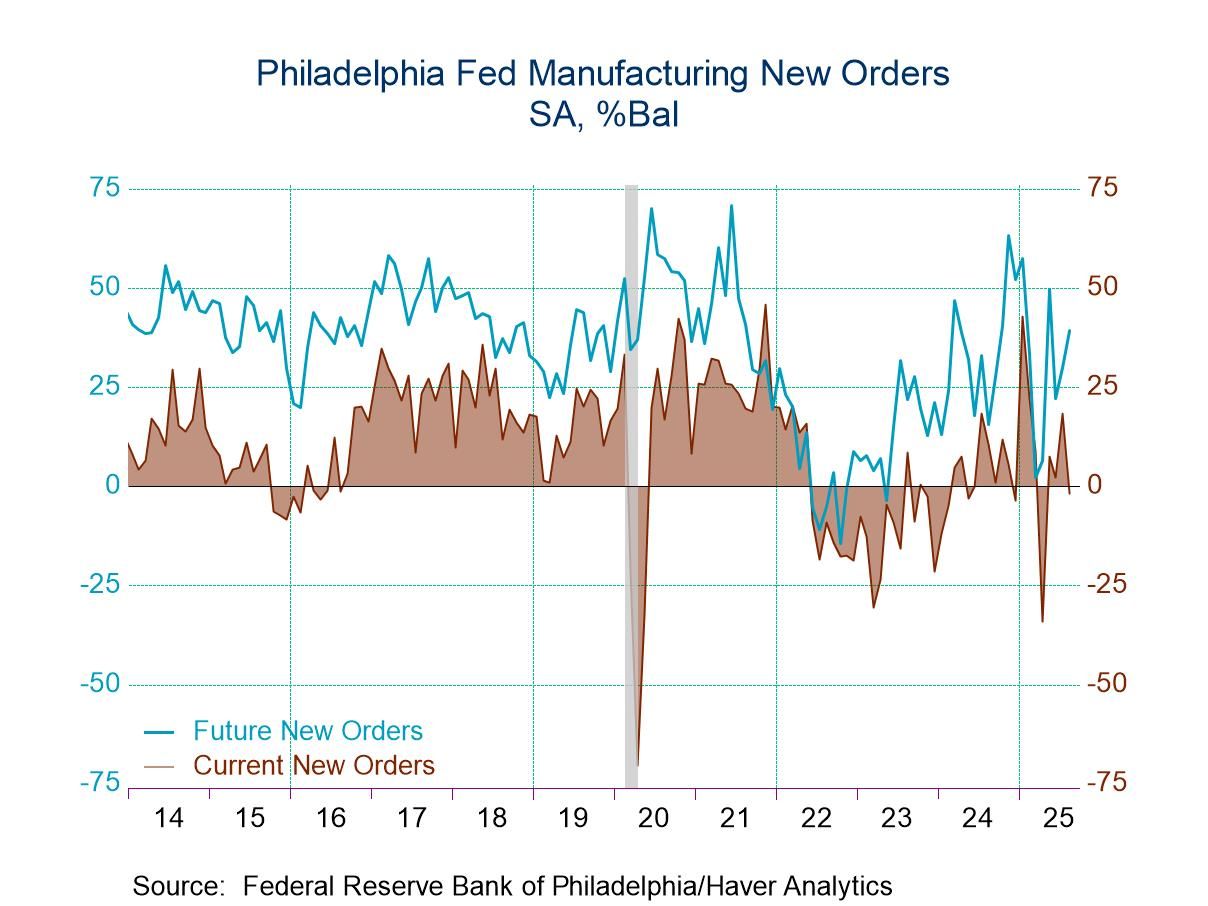
The Current Activity Diffusion Index from the latest Manufacturing Business Outlook Survey (MBOS) conducted by the Federal Reserve Bank of Philadelphia, fell more than 16 points to -0.3 in August from 15.9 in July. The index has posted negative readings, which indicate that activity is declining, in four of the previous five months. A reading of +5.0 for August had been expected by the Action Economics Forecast Survey. Nearly 30% of respondents reported an increase in activity in August, down from 31.7% in July, while 30% reported a decline, up markedly from 16% in July. Responses to this month's survey were collected from August 11 to August 18.
The headline index reflects the answer to a single question on activity. Haver Analytics calculates an ISM-adjusted current activity diffusion index from five key components using the methodology employed in constructing the national ISM index. That calculated index fell to 49.1 in August, the first reading below the critical 50 level that separates expansion from contraction since April, from 51.2 in July.
Looking at the component indexes, both new orders and shipments posted significant declines in August with orders plummeting into negative territory at -1.9 versus 18.4 in July. This was the first negative reading for new orders since the tariff-induced plunge in April. Thirty-four percent of respondents reported an increase in orders in August, little changed from 35% in July. In contrast, 36% reported a decline in orders in August, up markedly from 17% in July. Shipments also declined significantly in August although they remained in positive territory at 4.5 versus 23.7 in July. Twenty-nine percent of respondents reported an increase in shipments, down slightly from 32% in July. In contrast, 24% reported a decline, up markedly from 9% in July.
Firms continued to report overall increases in employment, but at a slower pace. The employment index fell 4 points to 5.9 in August from 10.3 in July. Most firms continued to report no change in employment levels (74%), while the share of firms reporting increases (16%) exceeded the share reporting decreases (10%, up from 7% in July). The average workweek index rose from 0.4 in July to 4.7 in August, its highest reading since March.
There was still no indication that increased tariffs have damaged supply chains. The delivery times index slipped further below zero to -5.4 in August, the fourth negative reading in five months indicating that delivery times are shortening, from -4.7 in July. Thirteen percent of respondents reported an increase in delivery times in August, up from 8% in July, while 18% reported a decrease versus 13% in July.
Inflation indicators continued to rise in August. The prices paid index jumped to 66.8 in August, its highest reading since May 2022, from an already elevated 58.8 in July. Nearly 67% of respondents reported an increase in input prices while no respondent reported a decline. The prices received index edged up to 36.1 in August, its highest reading in three months, from 34.8 in July. In the answer to a special question, firms expected a 4.1% increase in the prices of their own products over the coming year, up from 3.8% when this question was last asked in the May survey.
The outlook for the next six months brightened marginally in August with the Future Activity Index rising to 25.0 following an increase to 21.5 in July. Forty-one percent of respondents expect activity to increase over the coming six months, the same as in July, while 16% expect it to decline, down from 20% in July. The pace of increase in both new orders and shipments is expected to pick up. Delivery times are expected to increase only slightly. Employment growth is expected to slow. The outlook for capital expenditures rose markedly to 38.4 in August, the highest reading since January.
The Manufacturing Business Outlook Survey (MBOS), conducted by the Federal Reserve Bank of Philadelphia, is a monthly survey of manufacturers in the Third Federal Reserve District. Participants indicate the direction of change in overall business activity and in the various measures of activity at their plants. The diffusion indexes in the MBOS represent the percentage of respondents indicating an increase minus the percentage indicating a decrease. The series from the survey dating back to May 1968 can be found in Haver's SURVEYS database. The expectations forecast figures are from the Action Economics Forecast Survey in AS1REPNA.
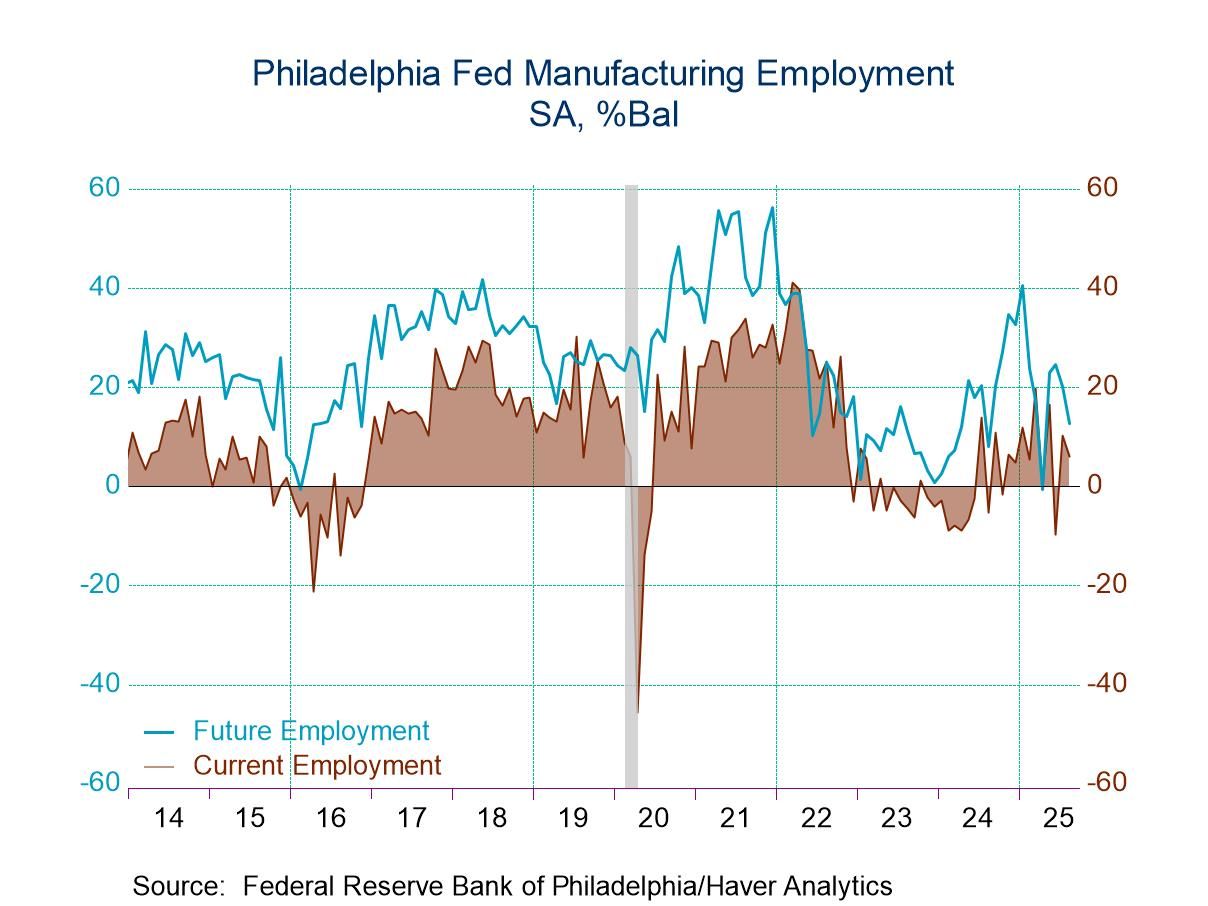
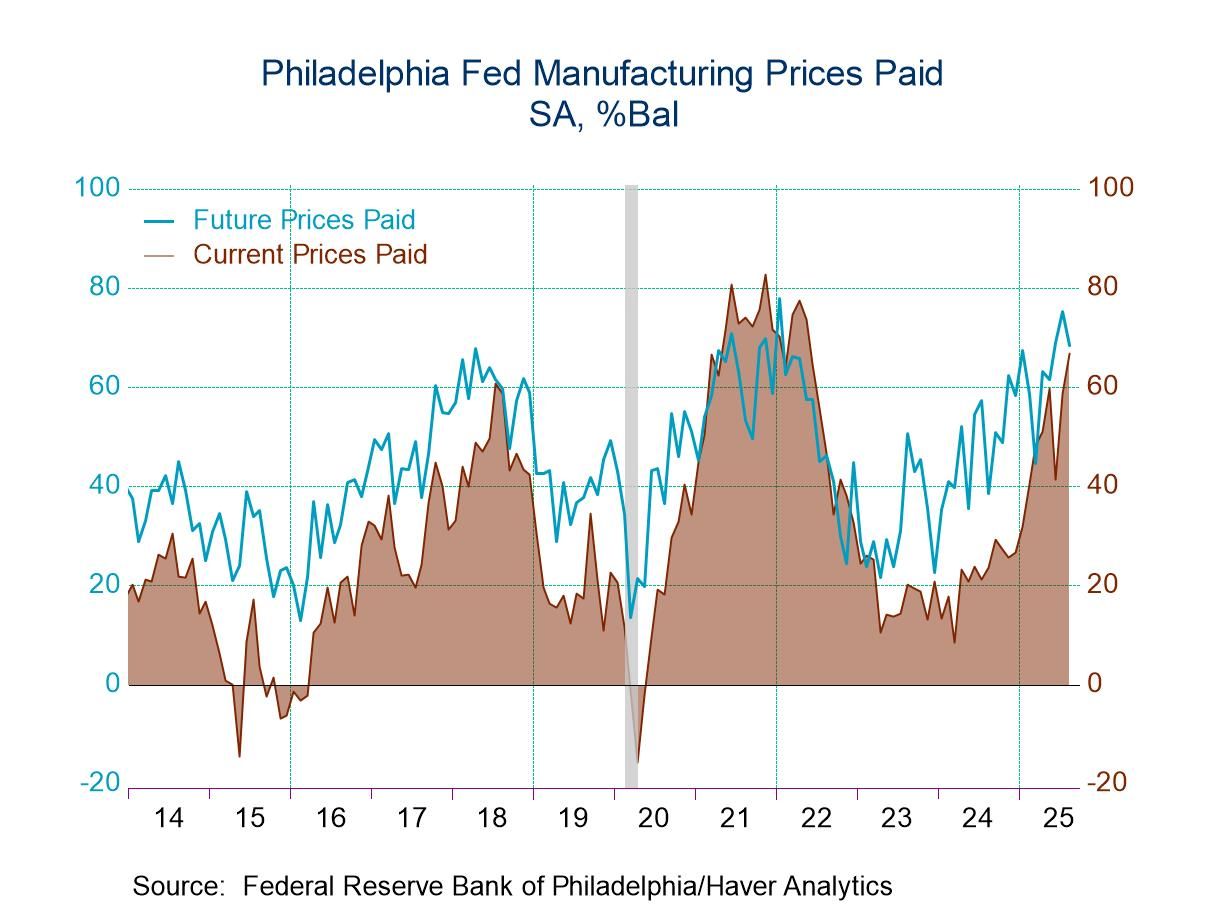
Sandy Batten
AuthorMore in Author Profile »Sandy Batten has more than 30 years of experience analyzing industrial economies and financial markets and a wide range of experience across the financial services sector, government, and academia. Before joining Haver Analytics, Sandy was a Vice President and Senior Economist at Citibank; Senior Credit Market Analyst at CDC Investment Management, Managing Director at Bear Stearns, and Executive Director at JPMorgan. In 2008, Sandy was named the most accurate US forecaster by the National Association for Business Economics. He is a member of the New York Forecasters Club, NABE, and the American Economic Association. Prior to his time in the financial services sector, Sandy was a Research Officer at the Federal Reserve Bank of St. Louis, Senior Staff Economist on the President’s Council of Economic Advisors, Deputy Assistant Secretary for Economic Policy at the US Treasury, and Economist at the International Monetary Fund. Sandy has taught economics at St. Louis University, Denison University, and Muskingun College. He has published numerous peer-reviewed articles in a wide range of academic publications. He has a B.A. in economics from the University of Richmond and a M.A. and Ph.D. in economics from The Ohio State University.



